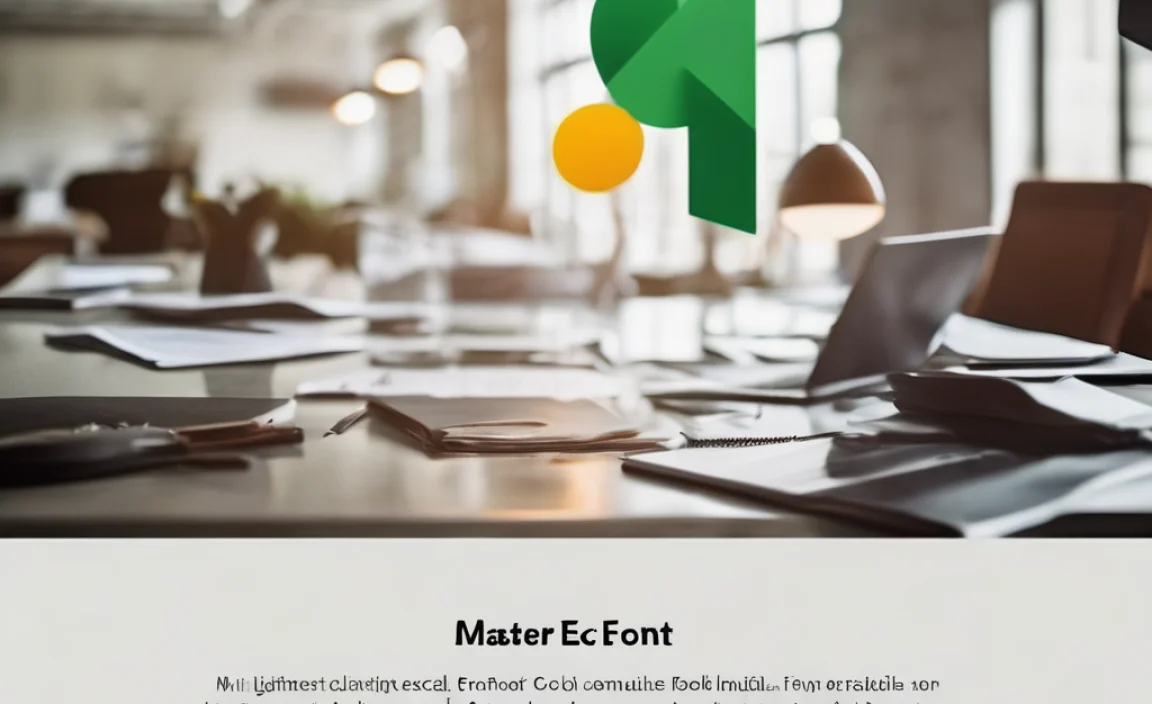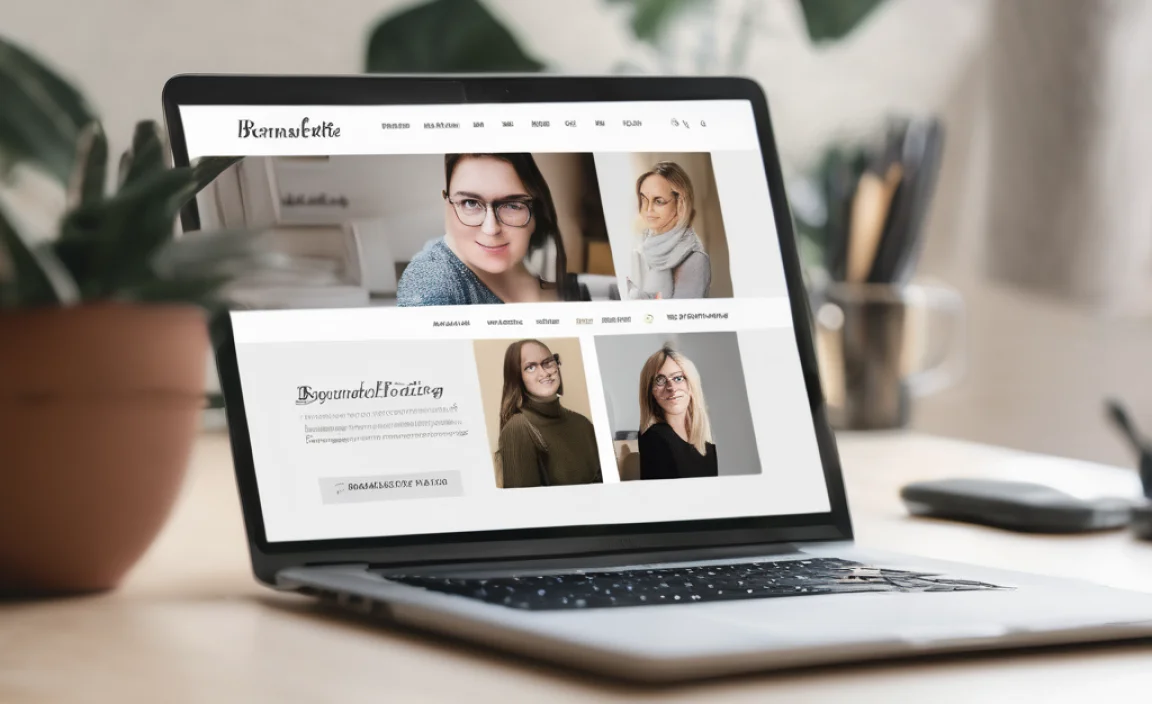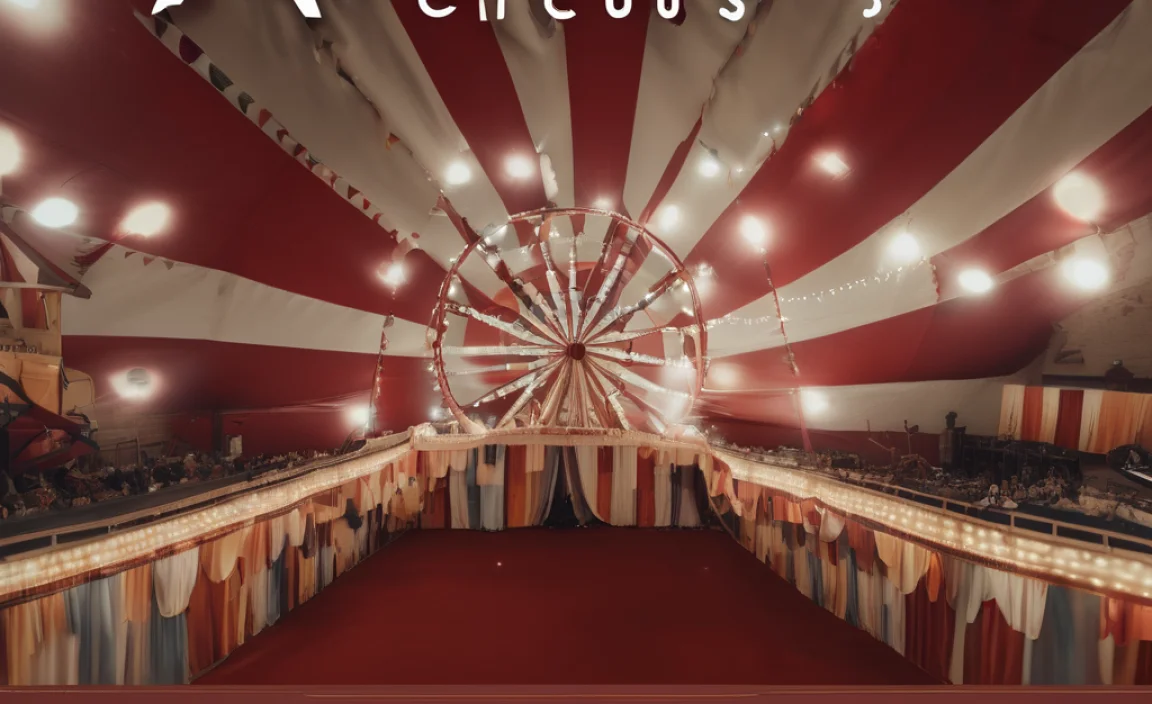Grateful Dead fonts alternatives offer a vibrant, psychedelic, and unique stylistic approach for designs seeking that iconic counter-culture and artistic flair. Explore these essential and stunning font options to capture the spirit without direct imitation.
Ever tried to capture that unmistakable Grateful Dead vibe in your design, only to find yourself stuck searching for the perfect font? You’re not alone! The Grateful Dead’s iconic lettering is instantly recognizable, full of swirling energy and a bohemian spirit. But finding fonts that echo that feeling – that blend of retro charm and artistic freedom – can be a real head-scratcher. This guide is here to help! We’ll dive into some fantastic alternatives that bring that special, artistic touch to your projects, making your designs stand out. Get ready to discover some fonts that are every bit as groovy!
Frequently Asked Questions
What makes Grateful Dead-style fonts unique?
Grateful Dead-style fonts are often characterized by their psychedelic, flowing, hand-drawn, and often decorative qualities. They tend to have a retro, 1960s and 70s aesthetic, bringing a sense of artistic freedom and counter-culture energy. Think about organic shapes, unique letterforms, and a generally whimsical or even slightly quirky personality.
Can I use Grateful Dead fonts for commercial projects?
While genuine Grateful Dead-inspired fonts might exist, it’s crucial to check the specific licensing for any font you consider using, especially for commercial purposes. Many fonts that mimic a style are created by independent artists and have their own terms. Always review the font’s license agreement to ensure compliance and avoid any copyright issues.
Where can I find free Grateful Dead font alternatives?
You can find free alternatives on various font platforms like Google Fonts, Dafont, or Font Space. Look for keywords like “psychedelic,” “retro,” “groovy,” “display,” or “script” fonts. Remember to filter by licenses that allow free use, especially for commercial projects.
What are the key elements to look for in a Grateful Dead font alternative?
Key elements include swirling or organic letterforms, a hand-drawn look, decorative flourishes, a retro feel (often 1960s-1970s), and a bold, eye-catching display quality. The font should evoke a sense of creativity, freedom, and artistry.
How do I choose the best Grateful Dead font alternative for my project?
Consider the specific mood and purpose of your design. For a bold, iconic look, choose a font with strong, flowing strokes. For a more subtle nod, a slightly stylized serif or sans-serif might work. Always test the font for readability, especially if it will be used for longer text. Ensure it visually complements your other design elements.
Are there any specific terms I can search for to find these fonts?
Yes! When searching on font websites, try terms like “psychedelic,” “groovy,” “retro 60s,” “retro 70s,” “hand-drawn display,” “art nouveau inspired,” “swirly,” “organic,” or “statement font.” These terms often lead to fonts with similar vibes.
Understanding the Grateful Dead Design Essence
Before we dive into specific fonts, let’s talk about what makes the Grateful Dead’s visual identity so captivating. It’s more than just lettering; it’s a whole mood. Think vibrant colors, organic shapes, and a sense of free-flowing artistry that defined the psychedelic era of the 1960s and 70s.
The band’s album art, posters, and merchandise often featured:
- Psychedelic Swirls and Patterns: Think flowing lines, radiating patterns, and optical illusions.
- Hand-Drawn Qualities: Many designs felt organic, imperfect, and human-made, not machine-perfect.
- Bold and Expressive Lettering: Fonts were often custom-designed or heavily stylized to be as much a graphic element as text.
- A Bohemian and Free-Spirited Aura: The overall feeling is one of creativity, individuality, and a break from conventional norms.
Capturing this essence in your typography means looking for fonts that embody these traits – fonts that are expressive, a little wild, and full of character. It’s about evoking a feeling as much as conveying information.
Why Seeking Grateful Dead Font Alternatives is Smart
While the original Grateful Dead lettering is iconic, directly copying it isn’t always the best or most practical approach for a few key reasons:
- Uniqueness and Branding: You want your project to have its own identity. Relying on heavily recognizable styles can make your work blend in rather than stand out.
- Licensing Issues: Original band artwork and custom lettering often have strict usage rights. Using them without permission can lead to legal trouble.
- Font Availability: Many iconic band fonts were custom-made for specific purposes and aren’t readily available as digital fonts for general use.
- Versatility: Finding alternatives allows you to adapt the spirit to various contexts, from gig posters to modern branding, without feeling constrained by a specific era’s direct design.
The goal isn’t to replicate; it’s to find fonts that share the same foundational spirit of creativity, artistry, and joyful rebellion. These alternatives let you tap into that cool, retro-psychedelic energy in a way that feels fresh and authentic to your own work.
Essential Grateful Dead Font Alternatives
Let’s explore some fantastic font families that capture that coveted Grateful Dead aesthetic. We’ll look at fonts that offer that swirling, bohemian, and artistic flair. These are great for grabbing attention and setting a vibrant mood.
1. Display Fonts with Psychedelic Flair
These are typically the showstoppers. They’re designed to be seen and make a strong statement, much like the original Grateful Dead lettering. They often feature unique curves, embellishments, and a lively character.
- Cooper Black: This chunky, rounded serif font from the early 20th century has a warm, friendly, and slightly retro vibe that was popular during the 60s and 70s. Its bold, rounded forms evoke a sense of comfort and nostalgia, making it a solid choice for a softer psychedelic feel. It’s versatile enough for headlines and even short blocks of text if used judiciously. You can find variations and sometimes even free versions, but the original and its licensed descendants are widely available.
- Arnold Böcklin: An archetypal Art Nouveau typeface, Arnold Böcklin features distinctive, flowing, and organic curves with a very distinctive “turn-of-the-century” psychedelic feel. It’s incredibly decorative and perfect for that vintage, artistic look. While it can be harder to find readily available free versions, its influence is seen in many modern replications.
- Budmo Jigger / Budmo Bomber (by Fontry): These fonts are explicitly designed to have that vintage circus and psychedelic poster feel. They are bold, quirky, and full of personality, making them excellent choices for headers and eye-catching graphics. These often require a license for commercial use, but they are fantastic examples of the style.
- Pulsar St: This font has a distinct retrofuturistic and psychedelic feel with its sharp angles and flowing connections. It’s energetic and makes for a powerful display font.
2. Groovy Script and Handwritten Styles
For a more personal, free-flowing, and artistic touch, look to script and hand-lettered style fonts. These often mimic the look of custom lettering and can bring a very organic, bohemian feel to your designs.
- Pacifico: A hugely popular, free script font available on Google Fonts, Pacifico offers a casual, flowing, and friendly handwritten style. It’s very readable and evokes a sense of approachable warmth and retro charm, reminiscent of 1960s signage.
- Lobster: Another classic free script font, Lobster has a bold, old-school feel with its dramatic curves and retro swagger. It’s inspired by classic letterforms and can add a significant dose of personality to titles and slogans.
- Ribeye: With its uneven baseline and slightly quirky letterforms, Ribeye has a charming, hand-drawn quality. It’s informal and fun, perfect for projects that need a touch of playful eccentricity.
- Aguafina Script: This elegant script font offers a calligraphic, flowing style that can evoke a vintage feel with its graceful strokes and swashes. It’s a bit more refined but still carries that artistic, expressive quality.
3. Organic and Art Nouveau-Inspired Fonts
The Art Nouveau movement (late 19th/early 20th century) heavily influenced the psychedelic art of the 60s and 70s. Fonts from this era, or inspired by it, often feature flowing, nature-inspired lines and decorative elements.
- Cinzel Decorative: While it has a more classical feel, the decorative capitals in Cinzel Decorative can evoke a sense of ornate artistry. It’s excellent for adding a touch of grandeur and a unique flair to headings.
- Metropolis: Inspired by Art Deco, Metropolis has a distinct geometric yet elegant style. Its strong lines and geometric forms can be adapted to create a retro, graphic feel that resonates with the period’s poster art.
- Garamond (with stylistic alternates):
While a classic serif, certain digital versions of Garamond offer stylistic alternates that can give it a more ornate or unique character, hinting at historical decorative typography. It’s about finding specific glyphs that add flair.
4. Bold Slab Serifs and Display Serifs
Sometimes, a robust serif font with strong character can also capture that iconic feel, especially when it’s used boldly or has unique flourishes. These can offer a more grounded, yet still very impactful, aesthetic.
- Slabtown: As the name suggests, this font has a strong slab-serif structure with a slightly retro, industrial, or even a bit of a Western feel. It’s bold and impactful.
- Abril Fatface: This is a high-contrast serif designed for headlines. Its dramatic thick and thin strokes, combined with its substantial weight, give it a vintage, editorial feel that can be powerfully expressive.
- Rockwell: A classic geometric slab-serif, Rockwell is sturdy and very impactful. Its straightforward boldness can serve as a great base for designs that need a strong typographic presence, much like some of the more robust Grateful Dead poster lettering.
How to Choose the Right Alternative
Selecting the perfect font alternative involves a little bit of art and a little bit of science. Here’s a simple process to help you make the best choice for your project:
Step 1: Define Your Project’s Mood
What feeling are you trying to evoke? Are you going for:
- Pure psychedelic energy and wildness?
- A more understated, bohemian artistic vibe?
- A quirky, hand-drawn feel?
- A bold, statement-making headline?
Knowing the exact mood will immediately narrow down your font choices.
Step 2: Consider Readability
This is crucial! While decorative fonts are fun, they aren’t always easy to read, especially for longer pieces of text. For:
- Headlines & Titles: You can get away with more decorative, expressive fonts.
- Subheadings: Opt for something moderately stylized but still clear.
- Body Text: Stick to highly readable fonts. If you want a Grateful Dead influence, you might use a simpler sans-serif or serif for body text and a stylized font for headings.
A great resource for understanding typography and readability is Interaction Design Foundation’s guide on readability, which offers principles applicable to all design choices.
Step 3: Test in Context
Never choose a font based solely on how it looks in a font catalog. You need to see how it works with:
- Your colors
- Your images or graphics
- Your layout
- The actual text content
Most font platforms allow you to type in your own text to preview. Use this feature extensively!
Step 4: Check Licensing
This cannot be stressed enough, especially when trying to evoke a specific style. Always check the license for any font you plan to use, particularly for commercial projects. Look for:
- Personal Use: Generally free for non-commercial projects.
- Commercial Use: Required for business logos, marketing materials, products, etc.
- Desktop vs. Web Fonts: Different licenses might be needed if you’re using them on a website versus a printed design.
Platforms like Google Fonts offer open-source licenses, making them very safe for various uses. For other foundries, carefully read their EULAs (End User License Agreements).
Pairing Fonts for Maximum Impact
Just like a great band needs complementary musicians, your typography often benefits from well-chosen pairings. Combining different font styles can create visual interest and hierarchy in your design.
Here are some effective pairing strategies when using Grateful Dead-style alternatives:
Hierarchical Pairing:
Use your chosen bold, attention-grabbing Grateful Dead alternative for headlines and titles. Pair it with a clean, readable sans-serif or serif font for body text. This creates clear visual distinction and ensures your main message is seen while the supporting content remains accessible.
- Headline: Budmo Bomber (bold, decorative)
- Body Text: Open Sans or Lato (clean, highly readable sans-serif)
Contrast Pairing:
Combine a flowing, organic script font with a more geometric or structured display font. This creates a dynamic contrast that can be quite visually engaging.
- Main Element: Pacifico (flowing script)
- Supporting Element: Pulsar St (geometric, sharp)
Thematic Pairing:
If your Grateful Dead alternative has a specific sub-theme (e.g., Art Nouveau inspired), pair it with another font that complements that theme, perhaps a different style of Art Nouveau or a font that’s historically related.
- Main Element: Arnold Böcklin (Art Nouveau)
- Supporting Element: A subtle, elegant serif with Art Nouveau nuances or a simple geometric sans-serif for balance.
Visual Summary of Font Categories and Use Cases
To help you visualize, let’s break down the types of Grateful Dead font alternatives and where they shine:
| Font Category | Key Characteristics | Best For | Example Fonts (Mentioned Above) |
|---|---|---|---|
| Psychedelic Display | Swirling, bold, ornate, eye-catching, highly decorative | Gig posters, album art, event titles, short impactful slogans | Budmo Jigger/Bomber, Pulsar St |
| Groovy Script/Handwritten | Flowing, organic, personal, casual, retro charm | Logos, invitations, packaging, signatures, informal headlines | Pacifico, Lobster, Ribeye |
| Art Nouveau/Organic | Curvy, nature-inspired, elegant, decorative lines | Vintage branding, artistic projects
|








